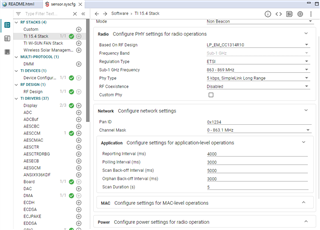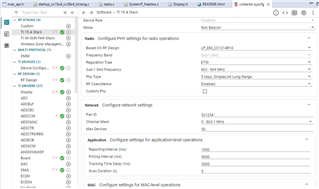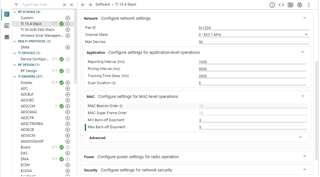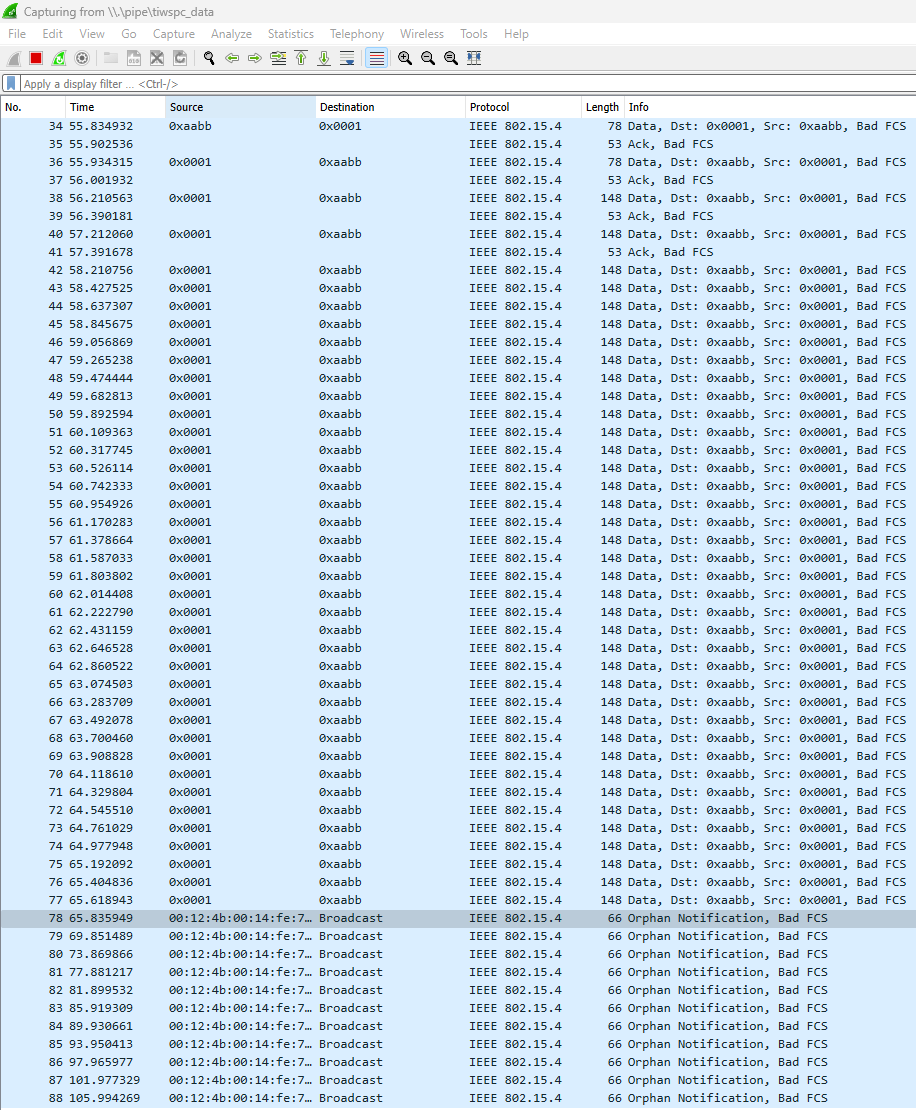Other Parts Discussed in Thread: SYSCONFIG, CC1352P
Tool/software:
Hi,
We are using the TI-stack 15.4 sensor-collector example. We have issues with the orphaned sensor rejoining the network.
As per the user guide, when the collector is pressed down, the sensor will go into the orphan state and send the orphan notification over all the available channels. Once the collector is powered on and receives this orphan notification, it will send the collector realignment command, and then the sensor will restart the network.
In our setup, when the collector is powered off, the sensor goes to the orphaned state. and we could see two scenarios,
1. Working flow: The sensor periodically sends the orphan notification, i.e., we could see the ApiMac_mlmeScanReq(&scanReq), and scanCnfCb() is triggered immediately. Now if the collector is turned on, the sensor will rejoin immediately and work as expected.
*********** LOG ***********
scanCnfCb status 234, scanType:3 DIB[4660,1,3]Ts[19379]
Sw state 3 , Ts[22383]
Proc state 3 , Ts[22384]
scan orphaned, Ts[22385]
scanCnfCb status 234, scanType:3 DIB[4660,1,3]Ts[23401]
Sw state 3 , Ts[26404]
Proc state 3 , Ts[26405]
scan orphaned, Ts[26406]
scanCnfCb status 0, scanType:3 DIB[4660,1,3]Ts[26551]
S: Co_Realign evt Ts[26554]
****************************
2. Issue flow: The sensor is not sending the orphan notification (we assume). i.e., we could see only the ApiMac_mlmeScanReq(&scanReq), and the scanCnfCb() is not triggered immediately (it is triggering after 420000 ms). So we assume the orphan notification is not sent sometimes.
*********** LOG *********** (Ts -> Time stamp)
Proc state 3 , Ts[845602]
scan orphaned, Ts[845603]
scanCnfCb status 0, scanType:3 DIB[4660,1,3]Ts[1266447]
S: Co_Realign evt Ts[1266451]
****************************
Is anyone facing this issue? Is that any fix that needs to be applied?. Kindly some one help us to resolve this issue.
Best regards,
Muniyappan R.M





